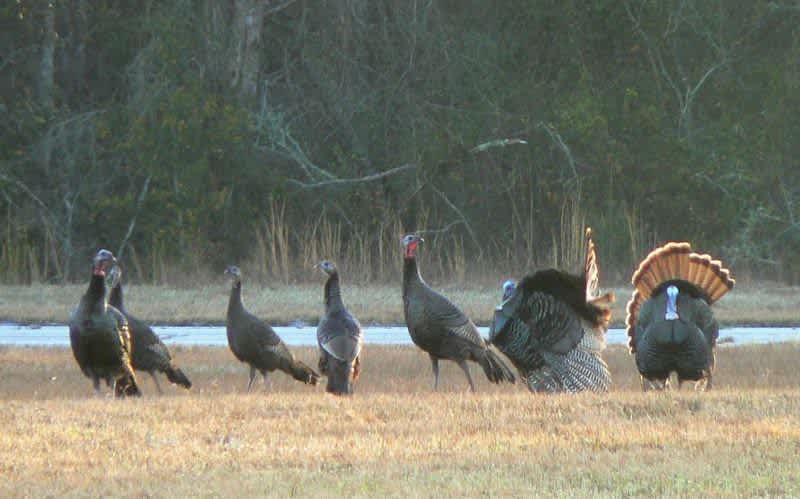Conservationists Work to Restore Eastern Wild Turkeys in Texas
OutdoorHub Reporters 01.31.14

East Texas will soon be home to a new population of wild Eastern turkeys, thanks to the efforts of state wildlife officials and the National Wild Turkey Federation (NWTF). The state expects to greet the birds in as early as a few weeks, coming from capture sites in Alabama, Kansas, Missouri, South Carolina, Tennessee, and West Virginia. It is the first, vital step in halting the decline of Eastern turkeys in Texas.
The Lone Star State does not lack wild turkeys, in fact the NWTF reports that Texas has the highest overall population in the country with more than 579,000 birds. However, a large portion of that number belongs to the Rio Grande subspecies in the western parts of the state. In addition, Texas also has one of the fastest-declining populations in the country.
“It’s the same old story,” Texas Parks and Wildlife Department biologist Jason Hardin said in a press release. “The birds were essentially wiped out by subsistence and market hunting along with extensive habitat loss in the later parts of the 19th century, but with the help of the NWTF, we have been able to bring the birds back all across the country. Although more than 50 counties in east Texas were stocked during the 1980s and 1990s only 28 counties are open for turkey hunting today. So we had to start looking at why we were not as successful in keeping the Eastern wild turkey population flourishing as other states in its historic range.”
Hardin told The Dallas Morning News that early attempts to stock the birds were problematic.
“Research has shown that the number of birds released during our earlier efforts was only suitable under ideal conditions, meaning high survival and good production the first year following releases,” he said.
Habitat, one of the major factors in the population decline, also forced the birds into isolated pockets of land with ideal conditions. Separated from other groups of Eastern turkeys, the animals quickly died out. Experts are now countering this problem by releasing the birds in greater concentrations.
“We have three sites, a Wildlife Management Area, private property, and a mine site where we plan on releasing the birds,” Hardin said. “We plan to release the birds in northwest Anderson County and central Rusk County, near the town of Henderson.”
Wildlife officials hope that as many as 250 of the birds can be transported into Texas depending on trapping success.

